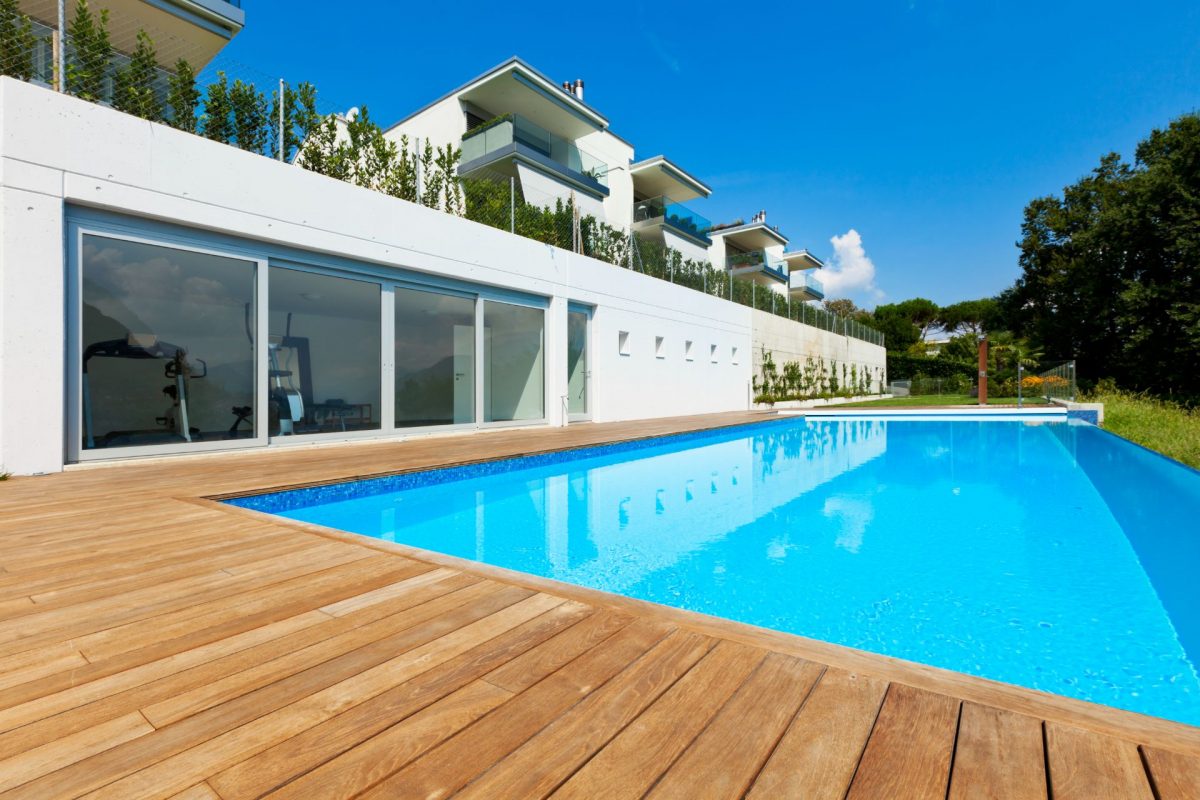How to Design a Swimming Pool
Concrete is the most frequently used material when building swimming pools. A concrete pool is designed with the ability to endure high-pressure strains and to hold up to the entire weight of water.
This article discusses the step-by-step procedure for designing a swimming pool, considering the essential demands of swimming pool construction. Although the standard recommendations differ from location to location, they all follow similar design patterns.
Before we proceed, let’s understand the various types and classifications of pool designs.
Pool Designs: Types and Classification
It’s important to note that swimming pools are available in various designs, types, and sizes.
And depending on the purpose of their design and preferences, they can be filled with either hot or cold water.
When deciding the type of swimming pool you want, it must be constructed based on the site’s conditions and functions. Thus, ensure to carry out a proper check on your space.
Choose from the following materials when designing your swimming pool:
- Reinforced concrete
- Fiberglass
- Galvanised steel wall panels
Types of swimming pool
Common examples of swimming pools in the UK are:
- Sprayed concrete swimming pools
- Indoor swimming pools
- Fibreglass one-piece pools
- Ceramic composite pools
- Natural swimming pools
- Above-ground pools
- Exercise pools
Tips: How to Design Your Swimming Pool
Pool Plans can design and renovate all types of swimming pools, including backyard pools to lap pools sitting atop types. We construct pools from scratch that resonates with your thoughts and ideas.
Whіlѕt we have our egos pumped up at the design of negative edges, wеt dесkѕ and асyrуlіс wіndоwѕ, the basis of any beautiful outdoor ѕрасе remains unchanged:
- Ask questions from all relevant parties
- In terms of design and shape, keep the client in mind
- Maximise the space efficiently
- Utilise surface finishes

Hence, you probably need to worry about positioning the pool and maximising the available space. Basically,
- Choose an ideal spot in your backyard.
- Considering that you’ll build a pool fence, keep this at least 1000mm away from the boundary fence.
- Avoid creating a full perimeter entry to the pool. Instead, have single or double-sided access.
- Choose an area visible enough from the house’s living areas so you can watch out for kids.
Step 2: Pool Design Guidelines
We highlight helpful guidelines below:
- In recent years, nobody has designed a pool with laps.
- If you’re planning a residential pool, a safety measure is designing it to discourage diving in practise.
- Build important spots with careful attention. An example is the area where one can sit or lie.
- Choose a great spot for the swimming pool such that you can come out of your room and straight to the pool.
Step 3: Material Selection
Now, it’s time to select materials for the surface finishes (decking, walkways, interior tiles, paving, etc.) and pool aesthetics.
Firstly, think of creating a balance between hard and soft finishes. You may utilise the idea of timber batons and paving stone flagstone to temper masonry surfaces. Some other examples of such materials include ceramic tile, mosaic tile, cedar, and stamped concrete.
If you’re considering using light-coloured paving products, blend them with something that will help reduce the colour stains. A good example is a light-coloured pool interior with dark-coloured paving.
Step 4: Landscaping and Pool Aesthetics
Landscaping plays an essential role in the design of a pool as it can affect its shape, size, and placement.
In addition to adding a touch of soft lushness and creating a soothing atmosphere, landscaping can enhance your pool privacy. So, whenever you’re designing a swimming pool, ensure to integrate existing landscape features.
Crеаtіvе lаndѕсаріng is one оf thе best аеѕthеtіс tооlѕ уоu саn uѕе tо complement the dеѕіgn of уоur pool.
Copings
Coping is part of the outlines of in-ground swimming pools. Placed around the top borders of the pool, it serves as a frame that protects the pool and the environment from being damaged by water. Also, it helps you split the framework from the decking.
When is the Best Time to Build a Pool?
The truth is that the best time to build a pool depends on individual preferences. However, choosing the best time can make your design plan go smoothly.
Often, pool experts advise building a pool during the low-demand season.
Usually, this is within fall and winter. Hence, you can always get the best price and expect favourable weather conditions.
On top of that, here are two big deciding factors:
Set a Budget
Above everything else, your budget helps you decide when you should build a swimming pool. If you plan to minimise cost, by all means, opt for the fall or winter season. On the other hand, if you’ve got the budget for it or are running out of time, you can build your pool any time of the year. However, remember that summer and spring are usually more expensive.
Pool usage
What would your pool be used for from the range of options discussed above? Typically most property owners usually plan to use their pool during the summer. And so, they build their pools even before the summer.
The bottom line to choosing the best time to build a pool is to weigh the pros and cons of all seasons. And, of course, your budget!

